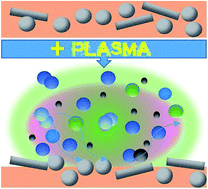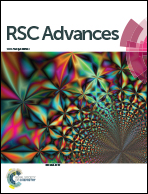Tackling chemical etching and its mechanisms of polyphenolic composites in various reactive low temperature plasmas†
Abstract
Selective removal of the surface polymer layer from glass filled polyphenolic composites is important while using them for applications which demand good thermal and electrical insulation properties. Inductively coupled low temperature plasma discharge was verified to facilitate chemical etching to selectively remove the surface polymer from the glass filled polyphenolic composite. The etching rate inside the plasma was compared with commercially important feeding gases including H2, N2, O2 and NH3 as a function of discharge power. The protruding surface polymer was removed in volatile molecular fragments, whereas the glass additives stayed unaffected. The etching rate is shown to increase as a function of applied power inside all used gas discharges. Irrespective of the applied power, O2 plasma displayed the highest etching rate. Furthermore, by combining optical emission spectroscopy (OES) and X-ray photoelectron spectroscopy (XPS) analyses, the work is extended to mechanistically present the possible chemical pathways which lead to creation of various functional groups on the surface during the plasma–surface interactions. This gives a new outlook towards the future applications of low temperature plasma processing in composite industry for surface modification and selective etching.


 Please wait while we load your content...
Please wait while we load your content...